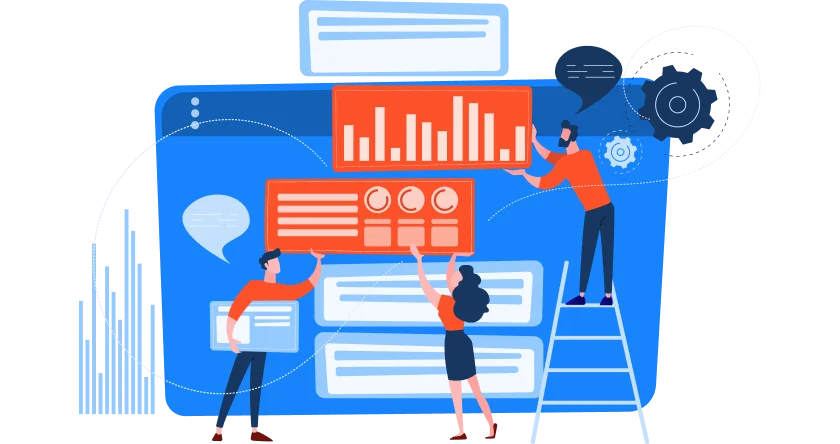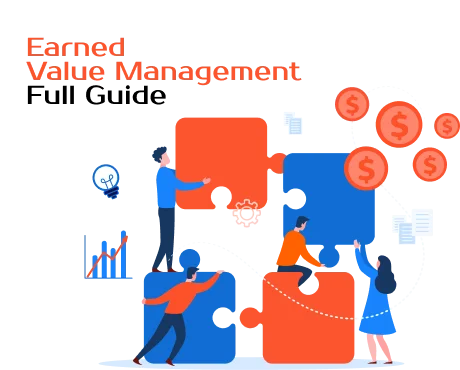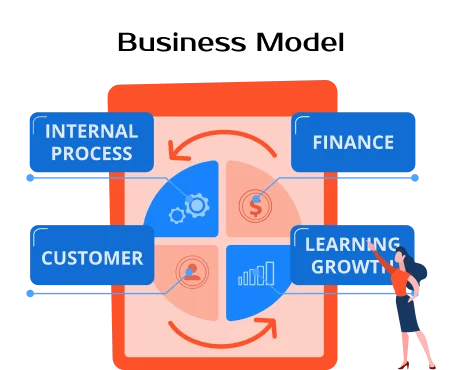Top Financial Metrics and KPIs: A Practical Guide for Every Business
Published:
August 3, 2025

No matter your industry or business model, keeping a close eye on the right financial metrics and KPIs is critical. These financial performance indicators don’t just tell you how your business is performing today; they guide decisions that shape your future growth, profitability, and resilience. In this guide, we’ll cover the key financial metrics that every business should track to ensure its long-term health and success. You’ll also find financial metrics examples to better understand their impact.
Need help improving your business? Let’s talk
Revenue Metrics: The Lifeline of Your Business
Total Revenue
Your total revenue reflects the core performance of your business. It’s the sum of all income generated through sales, contracts, or services. While the number alone is vital, tracking its growth over time provides insights into market trends and internal performance.
Revenue Growth Rate
Want to know if your business is thriving? Look at how fast your revenue is growing. Calculate it regularly to ensure your efforts are driving sustainable progress.
Formula: (Previous Period Revenue − Current Period Revenue) ÷ Previous Period Revenue × 100
Recurring Revenue
Businesses with predictable, recurring revenue streams enjoy greater stability. Think subscription models or retainers — this metric reflects how much income you can count on each month or year.
These are some of the best financial metrics to evaluate a company’s growth trajectory and revenue health.
Profitability Metrics: What You Keep Matters More
Gross Profit Margin
This is the most straightforward measure of profitability. It shows what’s left after covering the direct costs of producing goods or services.
Formula: (Revenue − Cost of Goods Sold) ÷ Revenue × 100
Net Profit Margin
Net profit margin digs deeper by showing how much of your revenue becomes profit after all expenses from operations to taxes are deducted. High margins signal strong cost control and pricing strategies.
Return on Investment (ROI)
Every investment your business makes should pay off. ROI measures how effectively your capital is generating returns.
Formula: (Net Gain from Investment − Investment Cost) ÷ Investment Cost × 100
These profitability measures are key business financial metrics for understanding long-term viability.
Efficiency Metrics: Work Smarter, Not Harder
Revenue Per Employee (RPE)
How productive is your team? RPE tells you how much revenue each employee generates, making it a key efficiency indicator.
Formula: Total Revenue ÷ Total Number of Employees
Operating Expense Ratio (OPEX)
A high OPEX ratio can erode profits, even with strong revenues. Use this metric to evaluate your operational efficiency.
Formula: OPEX Ratio = (Operating Expenses / Net Revenue) × 100
Inventory Turnover Ratio
For product-based businesses, this ratio reveals how quickly inventory moves. A higher turnover rate means better cash flow and fewer holding costs.
These examples of financial metrics focus on operational efficiency and resource utilization.
Liquidity Metrics: Your Financial Safety Net
Current Ratio
Liquidity is crucial. The current ratio shows if your business can cover short-term liabilities with current assets. A ratio above 1 signals financial stability.
Formula: Current Assets ÷ Current Liabilities
Quick Ratio
Also known as the acid-test ratio, this is a stricter liquidity measure. It excludes inventory to assess how quickly your assets can cover liabilities.
Formula: (Current Assets − Inventory) ÷ Current Liabilities
Tracking these liquidity-related financial KPIs for small businesses ensures you’re prepared for unexpected challenges.
Cash Flow Metrics: The Heartbeat of Your Business
Operating Cash Flow
Profitability doesn’t always mean liquidity. Operating cash flow measures how much cash your core operations generate, ensuring you can meet obligations without borrowing.
Free Cash Flow (FCF)
Free cash flow reveals how much cash remains after covering operating expenses and capital investments. It’s a sign of financial health and flexibility.
Formula: Operating Cash Flow − Capital Expenditures
These are some of the most critical financial key performance indicators for monitoring business sustainability.
Growth and Customer-Centric Metrics: Building for the Future
Customer Acquisition Cost (CAC)
Understanding what it costs to acquire a new customer helps refine your sales and marketing strategies.
Formula: Total Sales & Marketing Expenses ÷ Number of New Customers
Customer Lifetime Value (CLV)
Pair CLV with CAC to determine if your customers are worth the investment. A higher CLV-to-CAC ratio means your business generates long-term value from customer relationships.
Formula: Average Revenue per Customer × Average Customer Lifespan − CAC
Retention and Churn Rates
High retention and low churn rates indicate happy customers and stable revenues. Keep these finance metrics in check to avoid costly customer acquisition cycles.
These financial KPI examples highlight how understanding customer behaviors can drive long-term growth.
Why These Metrics Matter
These financial performance metrics provide a roadmap for decision-making. They’ll guide you in:
- Optimizing efficiency by identifying areas where resources are underutilized;
- Maximizing profitability through cost control and strategic pricing;
- Improving cash flow for stability and investment opportunities;
- Enhancing customer value by refining acquisition and retention strategies.
Tracking key financial metrics consistently is the cornerstone of business financial metrics management, whether you’re scaling a startup or steering an established enterprise.
Final Thoughts
Numbers tell the story of your business. By tracking these universal financial metrics and KPIs, you’ll have the insights needed to navigate challenges, seize opportunities, and build a resilient, profitable company.
Ready to take control of your financial health? Start tracking these key financial metrics today and unlock your business’s full potential.





